If most of us think back to our time in school, we can remember the rules we had to follow. LOTS of rules: Walk, don’t run. Raise your hand to speak. Take turns. Stay in for recess if you don’t finish your homework. No reading during a lesson. Go to detention if you draw on your desk. The list goes on and on. In a Montessori classroom, there are only a few important rules and certainly no harsh discipline. However, walk into any Montessori classroom and you’ll immediately notice the calm, orderly environment full of focused, well-behaved children. How could this be?
Montessori rules are simple, actionable, and comprehensive. Montessori rules are designed to protect a child’s rights and to hold them accountable for their responsibilities. Respect for the child is at the core of all Montessori rules.
While these rules are simple, we can learn a lot from them. Let’s dig in!
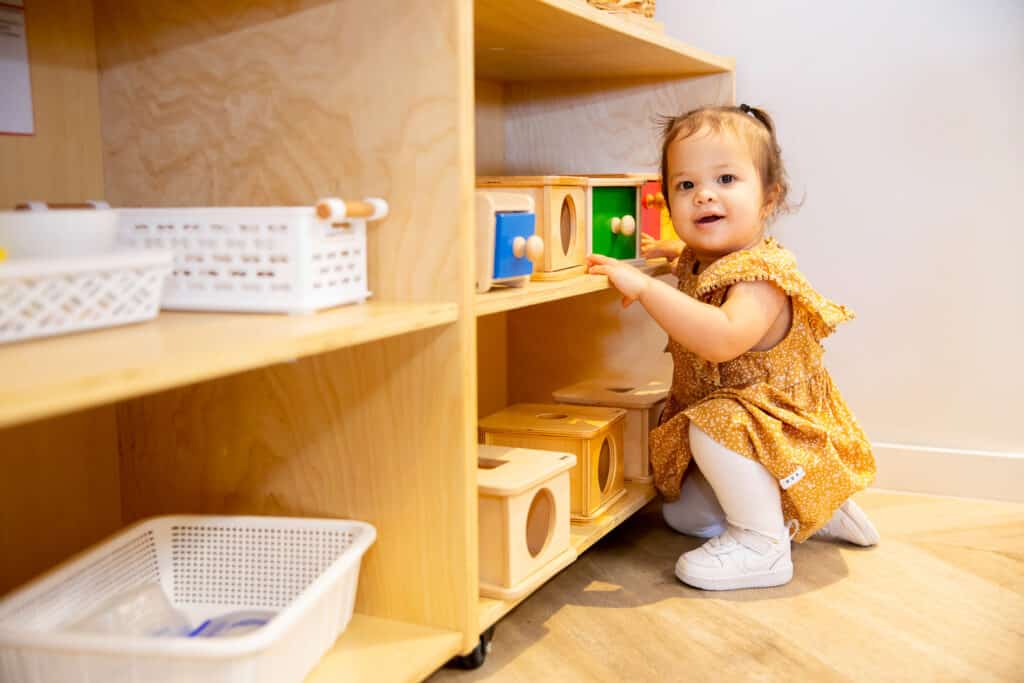
Discipline in Montessori Settings
Before we talk about Montessori rules, it’s important to understand the Montessori philosophy on discipline as a whole.
Traditional methods would indicate that discipline is a system of rewards and punishments. Get an A on your test? Here’s a piece of candy. Leave a mess on your table? You have to sit by yourself at lunch.
This is not the case for Montessori discipline. Like all aspects of the Montessori philosophy, Montessori discipline is all about child-centered learning. The Montessori method understands that children will make good choices when they are given the freedom to do so and that their natural inclination is to do well. No child enjoys messing up or getting in trouble!
So, instead of rewards and punishment, Montessori discipline is all about connection, boundaries, and natural consequences. Children need connection and trust with their teachers and caregivers. Teachers and caregivers set firm, appropriate boundaries to preserve the learning and living environments. And all actions come with natural consequences.
Let’s think back to the examples of traditional discipline we used earlier: In a Montessori classroom, a child who performs well on an assessment doesn’t get a piece of candy; they get the pride and confidence that comes from doing their best, as well as encouragement and praise from their teachers for working hard. A child who leaves a mess on their table doesn’t have to be isolated during lunch because those two things have nothing to do with each other. Instead, they will experience the natural consequence of having to clean up their table.
Rather than forcing children to behave through control, punishment, and bribery, Montessori discipline is designed to help children learn to behave in safe, respectful, and productive ways.
If you want to read more about the Montessori approach to discipline before learning more about Montessori rules, check out this article.
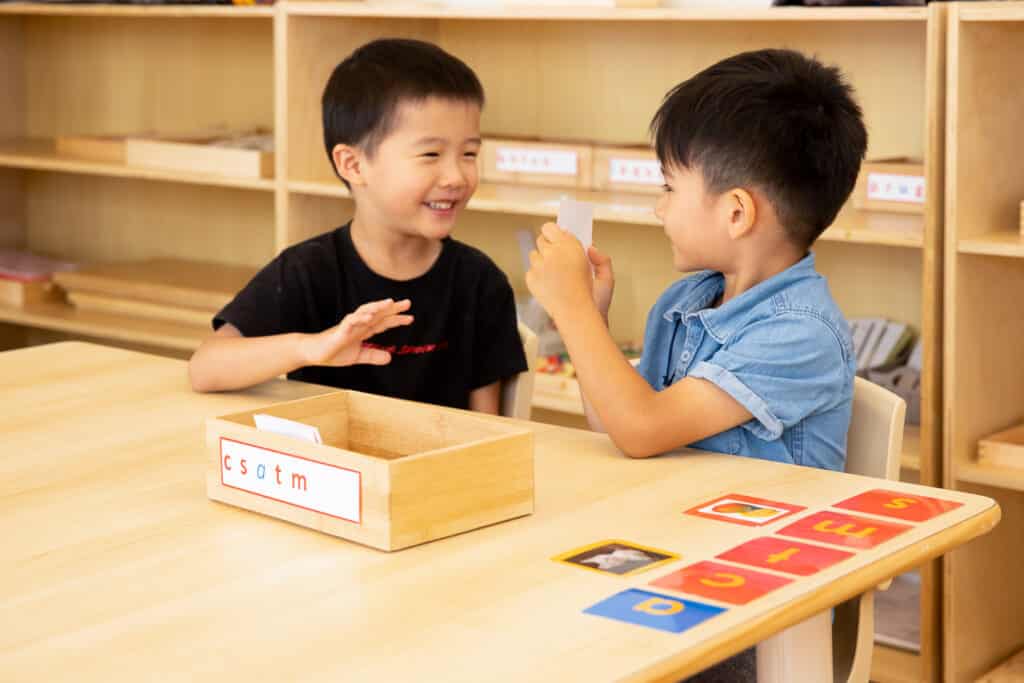
Montessori Ground Rules
Every Montessori classroom is different and every Montessori teacher runs their classroom a little differently. The same goes for Montessori parents and caregivers! However, one thing remains consistent across all Montessori environments: The Ground Rules.
The Ground Rules are the backbone of Montessori discipline and are largely responsible for maintaining a calm, focused, and joyful environment. There are three main Ground Rules in any Montessori space:
- Respect for oneself.
- Respect for others.
- Respect for the environment.
That’s it! Those are the rules. They may seem simple, but these three rules cover just about any scenario you can think of. A student pushes another student? That violates “Respect for others.” A child throws their toys around the room and doesn’t pick them up? That violates “Respect for the environment.” A student refuses to participate in learning? That violates “Respect for oneself.” All three of these rules are easy for children to understand and talk about, allowing children to be part of the conversation about classroom or home rules, instead of simply subjects to these rules.
The Ground Rules are also highly aligned with all five of the core principles of Montessori. They show Respect for the Child by making rules that are not designed to control the child, but are instead intended to guide the child. They are created according to the principle of The Absorbent Mind, with an understanding that children can learn and understand these rules because they are intelligent, thinking beings.
They are designed to work well with the idea of Sensitive Periods, as they are broad enough that they can be accessed at different levels by children of different ages and developmental stages. “Respect for the environment” helps children be active participants in the Prepared Environment that their teachers and caregivers work so hard to create for them. And, perhaps most importantly, these rules are based around the principle of Auto Education. Children learn best when they teach themselves.
The Ground Rules are general on purpose. In order for children to truly internalize how to behave safely and respectfully, they need to explore the boundaries of these rules themselves. The rules cannot simply be drilled into them by a teacher or parent.
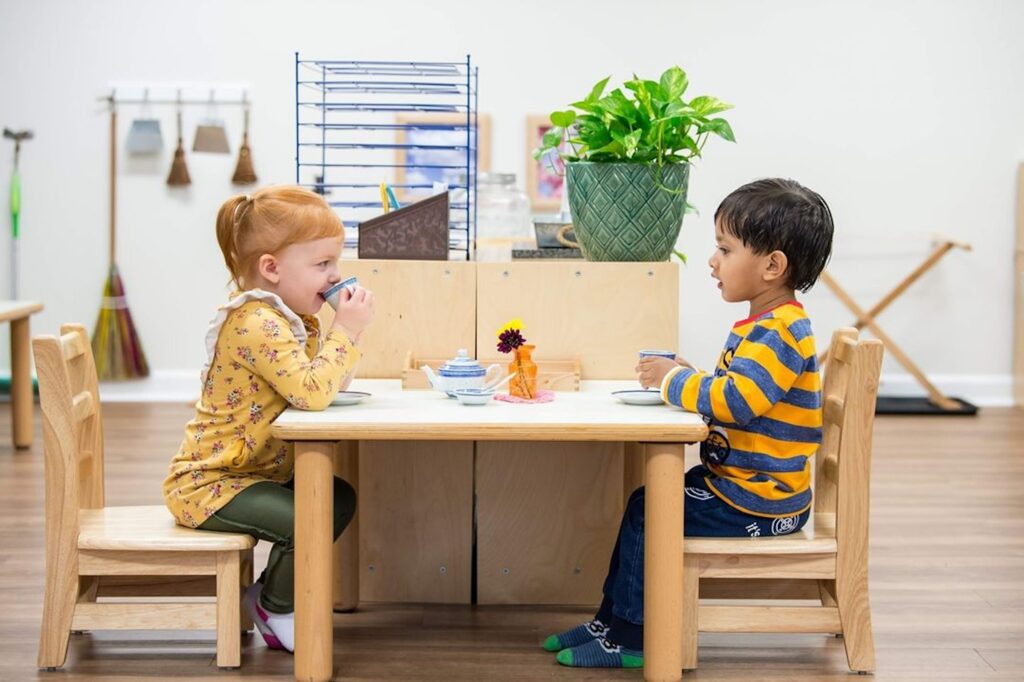
Rights and Responsibilities
This is not to say that teachers and parents have no role in teaching these rules. One great, and highly Montessori-aligned, method is to discuss these rules with the children in terms of Rights and Responsibilities.
All citizens of the world have both rights and responsibilities, so this is a good, real world-centered approach to explaining rules and discipline to children. This approach helps children to understand that they participate in a society in which certain things will be expected of them and in which they can expect certain things from other people. It’s also a useful way to teach children about how they can positively relate to other people!
It can be helpful to write down or discuss a list of rights and responsibilities in classrooms and at home. This helps children deconstruct the Ground Rules into more accessible examples. Rights and Responsibilities lists work best when they are created with the child, rather than for the child. Children are more likely to internalize concepts when they are an active participant in developing them!
For teachers, this might look like a classroom discussion while brainstorming on a piece of poster paper. For parents and caregivers, this might be as simple as a one-to-one conversation. Both teachers can solicit ideas from children by asking questions like:
- How do you want to feel in school/at home?
- What makes you feel respected?
- How can you show respect for others?
- How can you show respect for the classroom/house/playroom?
Here’s an example of what some Rights and Responsibilities list items might look like:
- I have the right to feel physically and emotionally safe in school. I have the responsibility to be safe with my words and actions so others can feel safe as well.
- I have the right to use any classroom materials I’m familiar with and know how to use correctly. I have the responsibility to wait my turn to use these materials if someone else is using them first, to treat these materials with respect, to use them safely, and to put them back where they belong when I’m done with them.
- I have the right to move around the space freely. I have the responsibility to move calmly and safely, and in such a way that I do not disturb others.
- I have the right to work and play how I choose, whether that be alone, with a friend, or in a group. I have the responsibility to respect the choices of others.
It’s important to note that Rights and Responsibilities are not just for students, but for teachers and caregivers as well! Modeling is at the core of all Montessori teaching, and this is no exception. If we want children to learn to behave, it’s imperative that we teach by example. Think about how confusing it is for children to be told that they have to be quiet, right before witnessing their teacher yelling at another student! Or being told that they need to always clean up their mess, while their parents never do!
Both the Ground Rules and Rights and Responsibilities should be able to apply to both children and adults in order to create an environment that is equitable, consistent, and understandable.
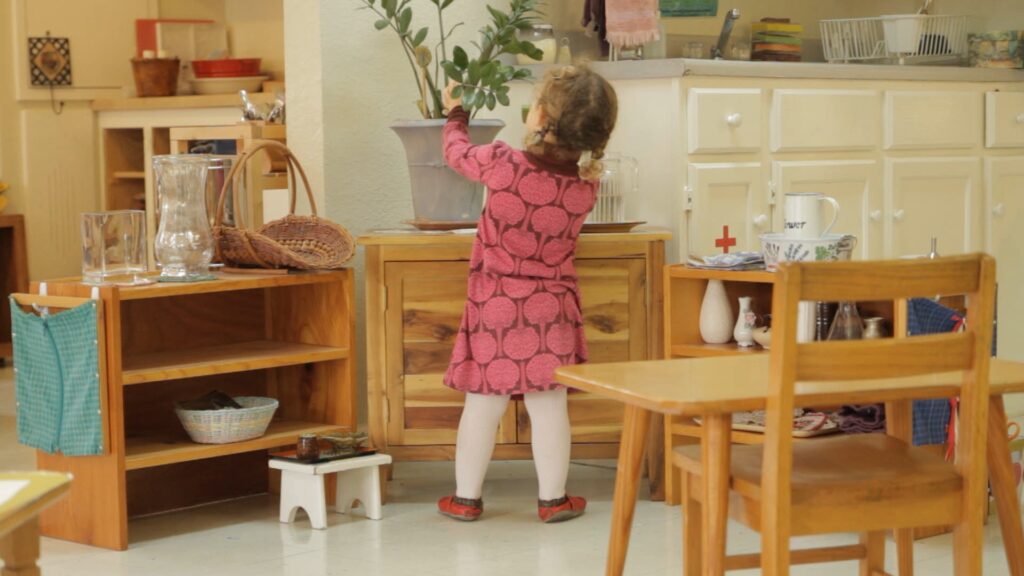
Why Montessori Rules Work
So, how does this work? Why are children more responsive to a few simple rules enforced through connection and natural consequences than many strict rules enforced through punishments and rewards?
The answer is simple: It’s all about learning. Children are not born with a complete understanding of their world; they have to learn it. Arbitrary rules, strict rules, punishments and rewards…all of these strategies can control how a child behaves, and can train a child to do certain things or not do certain things, but the child isn’t actually learning anything. Instead, they are simply performing rote behaviors that they don’t understand.
The Montessori approach, on the other hand, gives meaning to rules and discipline and invites children to understand why they exist. Montessori students and children raised in Montessori households will push boundaries and test limits, like all children, but the Ground Rules and the response to this testing and pushing will help them understand these limits and boundaries and make their own choices about how they want to behave in the future.
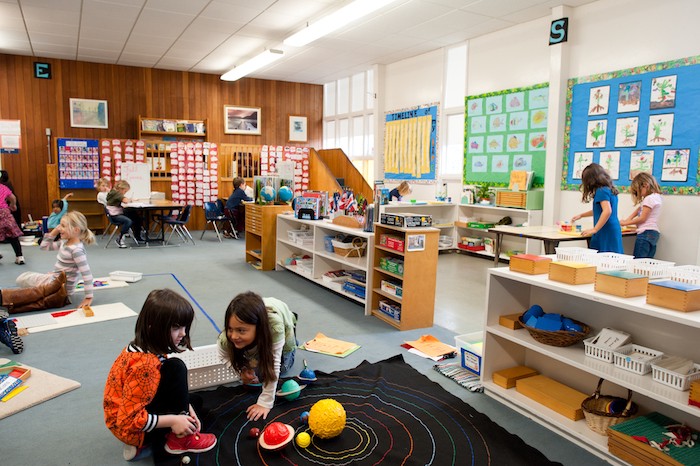
This is the difference between the Montessori method and traditional discipline: While other children might behave because they’re afraid of what will happen if they don’t, Montessori children behave because they know it’s the right thing to do.


